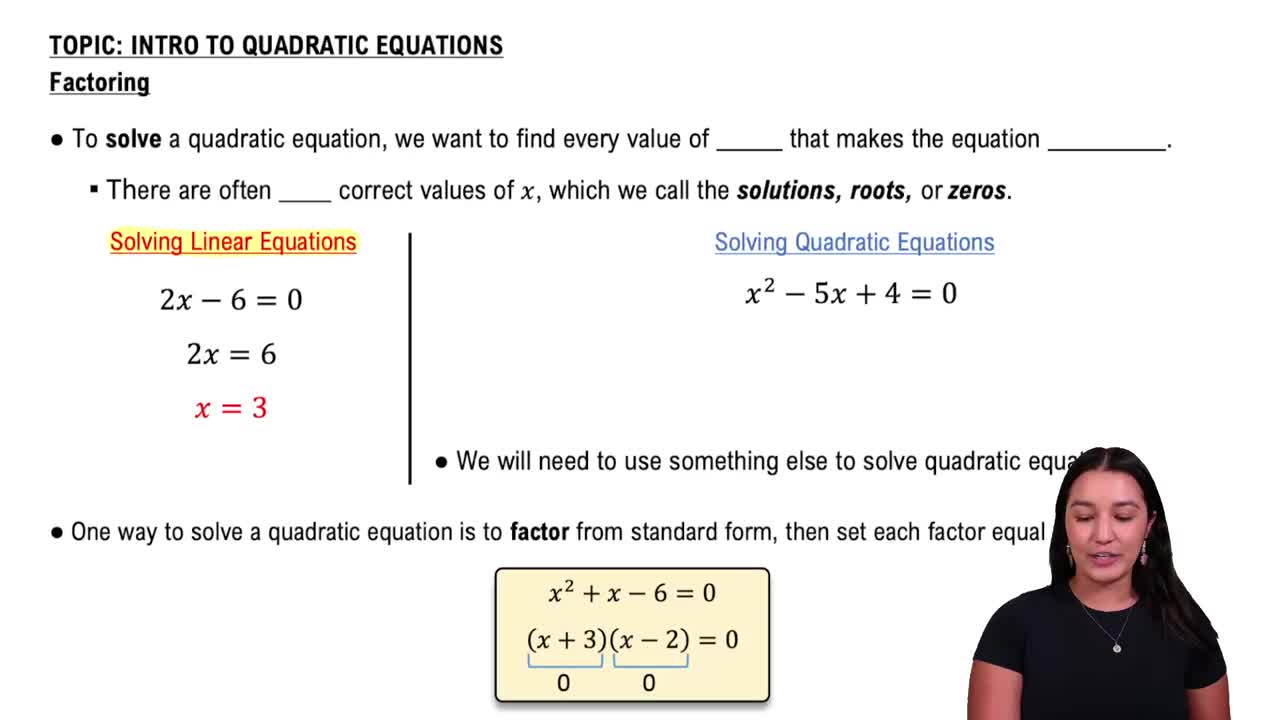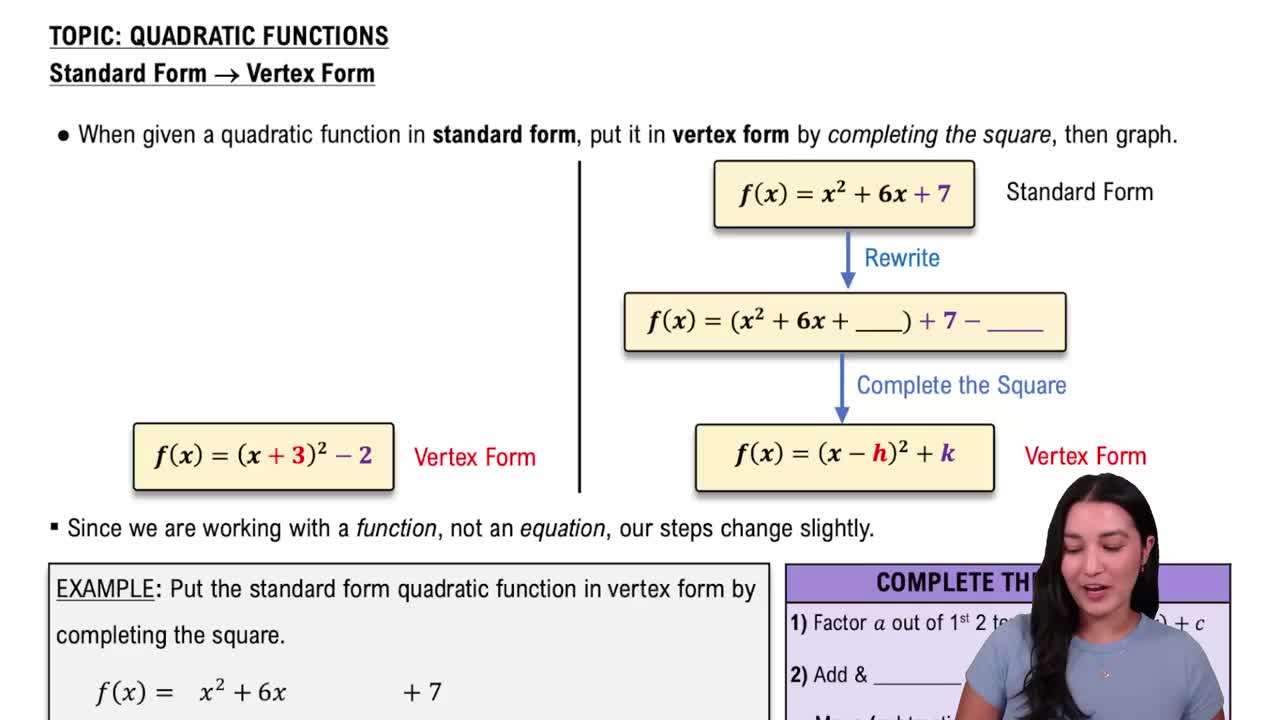Here are the essential concepts you must grasp in order to answer the question correctly.
Factoring Quadratic Equations
Factoring is the process of breaking down a quadratic equation into simpler expressions that can be multiplied to yield the original equation. In the context of the equation x^2 = 8x - 15, we first rearrange it into standard form, ax^2 + bx + c = 0, and then look for two numbers that multiply to the constant term and add to the linear coefficient.
Recommended video:
Solving Quadratic Equations by Factoring
Standard Form of a Quadratic Equation
The standard form of a quadratic equation is expressed as ax^2 + bx + c = 0, where a, b, and c are constants, and a is not zero. This form is essential for applying factoring techniques, as it allows us to identify the coefficients and constant needed to find the roots of the equation through factoring.
Recommended video:
Converting Standard Form to Vertex Form
Zero Product Property
The Zero Product Property states that if the product of two factors equals zero, then at least one of the factors must be zero. This principle is crucial when solving factored equations, as it allows us to set each factor equal to zero to find the solutions for the variable, which in this case will help us determine the values of x that satisfy the original equation.
Recommended video:
Product, Quotient, and Power Rules of Logs



